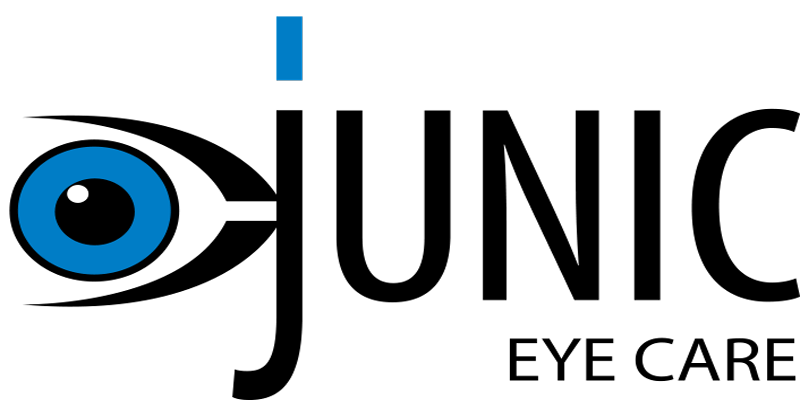Have you begun to notice a shadow in the center of your vision? You could be experiencing Age-Related Macular Degeneration (AMD).
Many think that once you have AMD, there’s little you can do to slow it. But, recent treatments and lifestyle changes are proving otherwise.
I’m Juliet Menakaya, the owner and principal optometrist at Junic Eye Care. I’ve dedicated my career to understanding and treating many types of vision challenges. I focus especially on low vision and binocular vision issues. My passion is in helping patients see the world with ease.
Let me share the story of a patient of ours. A 65 years old retired hospitality worker, she noticed her vision blurring, especially when trying to enjoy her passions in life; reading and cooking. Remembering that our practice caters to the vision needs of all ages, she booked a consultation. It was revealed that the patient was in the early stages of age-related macular degeneration. But with our tailored advice and treatment plan, her condition stabilized. It allowed her to keep enjoying her beloved books and recipes without fearing total vision loss.
Don’t wait until your vision changes to protect your eyes. Book an eye care consultation with us today. It’s the first step to better eye health.
They say knowledge is power, so keep reading to learn more about diagnosis and care for macular degeneration conditions.
Understanding Macular Degeneration
How often do you think about the health of your eyes? For many, the answer might come only when vision begins to change, especially as we age. Age-related macular degeneration (AMD) is a prime example of why we should pay attention sooner rather than later. This condition targets the macula, the part of the eye crucial for clear, straight-ahead vision, which is vital for tasks like reading, driving, and recognizing faces.
AMD manifests in two forms: dry and wet. The dry form is more common, affecting around 80% of those diagnosed with AMD. It’s characterized by the thinning of the macula and the buildup of drusen (small, yellow deposits), leading to a gradual loss of central vision. On the other hand, wet AMD is less common but more severe, caused by abnormal blood vessels that grow under the retina and leak fluids, causing rapid and significant vision loss.
Understanding the difference between these two types is essential, not just for diagnosis but for treatment as well. While there’s currently no cure for AMD, early detection and management can significantly slow its progression and impact on your life. As an optometrist, my goal is to help my patients maintain the best vision possible through comprehensive eye care and the latest treatments available.
Risk Factors and Prevention
Can lifestyle choices really influence your risk of developing age-related macular degeneration (AMD)? It’s a question I often encounter in my practice. The truth is, while we can’t choose our genes, there are steps we can take to mitigate our risk of AMD, a leading cause of vision loss in people over 50.
Family history plays a significant role in your risk for AMD. If your parents or siblings have been diagnosed with AMD, you’re at a higher risk. This genetic predisposition doesn’t mean AMD is a certainty for you, but it does underscore the importance of regular eye check-ups and being proactive about eye health.
Smoking is the most significant modifiable risk factor for AMD. Smokers, or those regularly exposed to smoke, have a substantially higher risk of developing AMD compared to non-smokers. Quitting smoking, or better yet, never starting, is one of the best ways to protect your eyes.
Your diet also plays a critical role in eye health. Consuming a diet rich in antioxidants, omega-3 fatty acids, and certain vitamins and minerals can support macula health. Think of your eye health as a bank account: the more you deposit good nutrients like leafy greens, fish high in omega-3s, and colorful fruits and vegetables, the more you invest in your vision’s future. Foods high in vitamins E and C, zinc, and antioxidants contribute to the defense against oxidative stress in the macula.
Regular physical activity is another pillar of preventing AMD. Exercise improves blood circulation, which is vital for eye health, helping to reduce the risk associated with AMD. Even moderate activities like walking can make a significant difference.

Early Detection: Key to Managing AMD
Regular comprehensive eye exams include more than just updating your prescription glasses. They’re a crucial opportunity for us to assess the health of your eyes, including the macula. During these exams, we use specialized tools and techniques to detect subtle changes in your vision that may indicate the early stages of AMD. By catching these changes early, we can intervene and implement strategies to slow or halt its progression.
In addition to regular eye exams, there are home monitoring tools available that can help you keep an eye on your vision between appointments. The Amsler grid is a simple but powerful tool used to detect changes in your central vision, which is often affected by AMD. By regularly checking your vision against the grid, you can alert us to any abnormalities and seek prompt treatment.
Distance and near vision testing are also essential components of home monitoring. Changes in your ability to see objects at a distance or up close can be early indicators of AMD. By regularly assessing your distance and near vision, you can track any changes and bring them to our attention during your next appointment.
Treatment Options for AMD in Canberra
When it comes to age-related macular degeneration (AMD), knowing your treatment options can make all the difference. But what exactly can we do to combat this condition here in Canberra? Let’s discuss the various treatments available and how they can help manage AMD effectively.
At Junic Eye Care, our approach to managing AMD is comprehensive and collaborative. We work closely with local ophthalmologists to ensure that our patients receive the best possible care. This includes timely referrals for advanced treatments and ongoing co-management to monitor progress and adjust treatment plans as needed.
For those with dry AMD, lifestyle modifications and dietary supplements are often the first line of defense. While there’s no cure for dry AMD, certain lifestyle changes, such as quitting smoking and maintaining a healthy diet rich in antioxidants and vitamins, can help slow its progression. Think of it as tending to a garden: by nourishing your body with the right nutrients and habits, you can create an environment where your eyes can thrive despite the challenges posed by AMD.
On the other hand, recent years have seen significant advancements in the treatment of wet AMD, thanks to a therapy called anti-VEGF (vascular endothelial growth factor) injections. These injections work by targeting the abnormal blood vessels responsible for the rapid vision loss associated with wet AMD, helping to stabilize or even improve vision in many cases.
Watch the following video from Wills Eye Hospital (accredited US hospital) to learn more about the latest advances in wet AMD treatment and advanced stage dry AMD treatment. We hope these new AMD treatment options will soon be available in Australia.
Living with AMD: Support and Resources in Canberra
What if you were suddenly faced with the challenges of living with age-related macular degeneration (AMD)? How would you adapt to the changes in your vision and navigate your daily life? Here in Canberra, there are resources and support available to help you adjust and thrive despite the obstacles posed by AMD.
Eyes for Life (EFLC) is one such support group in Canberra that empowers people with vision impairment. EFLC will provide solutions and strategies to help you maintain your independence. A Future Development Plan is about developing basic and essential skills for you to live confidently at home, in the community and to increase your social participation.
Adapting to life with AMD can be daunting, but it’s not insurmountable. Practical tips and aids can make a significant difference in your daily routine. Simple modifications, like increasing the brightness and contrast on your electronic devices or using magnifiers and large-print materials, can make tasks like reading and writing more manageable. It’s all about finding creative solutions that work for you and your unique needs.
But sometimes, even with these adjustments, you may still find certain activities challenging due to your vision loss. That’s where low vision therapy comes in. This specialized form of therapy focuses on maximizing your remaining vision and teaching you alternative techniques to perform daily tasks independently. It’s like having a personal coach by your side, guiding you through the intricacies of living with AMD and empowering you to live life on your terms.
Here at Junic Eye Care, we understand the impact that AMD can have on your life, which is why we’re dedicated to providing comprehensive support and resources to our patients. From practical tips for daily living to low vision therapy sessions tailored to your specific needs, we’re here to help you navigate the challenges of living with AMD with confidence and resilience. With the right tools and support, you can continue to live a fulfilling and independent life, regardless of your vision loss.
CONCLUSION
Junic Eye Care in Canberra offers many ocular care services including early detection, management, and referrals for AMD patients. Our low vision therapy helps maintain quality of life for patients with advanced AMD. Without timely help, AMD can get worse fast. This is especially true for the wet form. It can lead to severe vision loss or legal blindness.
Your vision is irreplaceable. Seize the chance to preserve it by booking an eye care consultation with Junic Eye Care today.
To visit our optometry practice, click the “Book Online” button at the top of the page or call (02) 6152 8585 today.
You’ll find our clinic conveniently located in the Molonglo Health Hub, just a short 10 minute drive from central Canberra, with plenty of free parking when you get here.

CANBERRA OPTOMETRIST
Juliet obtained her Doctor of Optometry degree from the University of Benin, Nigeria in 2006. She completed an internship programme before migrating to Australia, where she completed a master’s degree in public health at the University of Sydney in 2014. Following this, Juliet obtained a Master of Orthoptics from the University of Technology Sydney (UTS) in 2017.
Juliet has completed her competency in optometry examination with OCANZ (Optometry Council of Australia and New Zealand), and obtained her ophthalmic prescribing rights from ACO (Australian College Of Optometry Victoria). Juliet has worked in various positions, including retail Optometry, the Ophthalmology Department at Canberra Hospital, and more recently, at the John Curtin School of Medical Research (ANU).
As a dedicated Canberra optometrist, Juliet is passionate about helping people with low vision, and binocular vision anomalies hence her interests in Low Vision Rehabilitation, Eccentric Viewing Training and Paediatric optometry.

